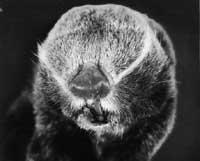The eyes, from the simplest light emphasizing mechanisms to high-definition machines
2009/09/01 Korta Hernandez, Nerea - Elhuyar Zientziaren Komunikazioa Iturria: Elhuyar aldizkaria
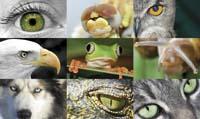
Two species of abyssal fish have overcome this problem. Until recently, no specimens of these two species were captured, so they were mistakenly believed about them.
One of them is the fish Dolichopteryx longipes, which was said to have four eyes. But when he was captured, the researchers discovered the peculiarity of his eyes. He has not four eyes, but two. The other two ogival organs are mirrors. These mirrors direct light to the retina so they can see what they have at the bottom. "They direct the light to the real view, it is very intelligent. In this way the catchment field is expanded, as it has the opportunity to see the superior and the inferior", says biologist Miren Bego Urrutia, professor and researcher of Animal Physiology of the UPV.
This fish is the first vertebrate that has developed mirrors in the eyes to focus light and controls orientation towards a specific focal point. However, the technique used to create the mirror is not new: it uses organic crystal inserts in many layers, as many fish do with scales.
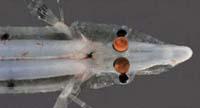
The other case is Macropinna microstoma. Since it was described in 1939, it has been a mystery, with a transparent head that they believed could only see with their eyes the superior. But recently a copy was filmed by researchers at the Monterey Bay Aquarium. Then they saw that the fish is able to move their eyes as they wanted, and that it is not stuck on the head up. That's what explains that the head is transparent, it has eyes inside the head!
Potential advantage
All indications suggest that in the Cambrian Explosion appeared the ability to detect light. According to experts, then the predator emerged, so any advantage could be decisive for survival. "First there was a photoreceptor process: there must be a pigment, the light must excite that pigment, which will cause a nervous quinada," explains Urrutia.
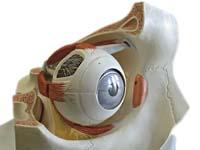
From there, the environment imposed the needs and, therefore, the different ways of seeing. Thus, photoreception became vision.
In the eyes able to create an image, the simplest look like the dark camera, like those of Nautilus. This mollusc has not changed for millions of years and its eyes are of the oldest. "He has no lenses. The light enters through a small hole, creating an inverted image on the back, as the first cameras did," says Urrutia.
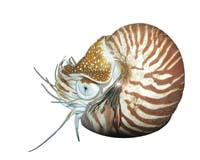
But at a lower depth and outside the sea, needs change. There are more light and more predators. Therefore, some arthropods and molluscs have eyes of greater visual field, compound eyes. Bees are an example of this. Compound eyes are formed by groups of simple eyes. Each simple eye is an omatidium, an optical unit. Each of them receives a part of the receiving field. The receiving areas of each unit are joined and the mosaic image is obtained. They can be large eyes with high omatidia content; larger eye size, wider visual field.
Among the vertebrates appeared the eyes that produce images of high resolution: the eyes of camera. They are similar to current cameras, with lenses for refraction and concentration and with the iris as a diaphragm.
The best known example for the human being is that of the human being, but not the most perfect. Human vision has several imperfections: "First, the normal problems of human vision (myopia, astigmatism...) would be deadly in the wild," explains Urrutia. On the other hand, human photoreceptor cells are located upside down. Light should travel around the eyeball to reach the retina, where photoreceptors are located. In addition, the ganglion cells that form the optic nerve come out through the pathway of light, generating a blind spot. It would be like passing the cables ahead of the camera lens. However, the blind spot is compensated by binocular vision and the missing part is formed by the brain.
Color perception

The perception of colors is also different from species to species. The light does not come equally everywhere and the eyes have adapted to the needs.
"Photopigments are able to differentiate colors. In vertebrates, this happens in cones," says Urrutia. In the retina there are cones and canes, photoreceptor cells sensitive to light. "The rods' photopigments, being all of the same type, provide only information about the intensity." The canes work well in the dark because they are very sensitive to light. But cones need a lot of light, so in the dark you can not see color.
Seeing no color in the dark, the night animals do not need many cones and have many canes. So, they are able to see them at night, but in general they see fewer colors during the day. Those of the day have to differentiate the colors: find food, find a partner, see raptors... Therefore, they have fewer canes and more cones.

For example, humans have three types of cones: trichromatic vision. One cone surrounds the red, the other the blue and the other the green. This allows you to see a wide range of colors.
It has long been believed that dogs see it in black and white, but recent studies have shown that they have a similar vision to that of man, with a smaller range of red and green.
Most animals have two types of cones: dichromatic vision. And the night animals, like raccoons and roe, see it in black and white. His vision is monochromatic.
Necessity sometimes exceeds limits that seem insurmountable. For example, bees and some birds should receive information from flowers to survive. Therefore, they have four or more types of cones that are able to detect also ultraviolet. "We don't have photopigment to see it," explains Urrutiak--, "but the characteristics that go unnoticed to us can be attractive to bees, since flowers can send them important information."
In hard ecosystems, such as the desert, it is impossible to hunt most predators by day. At night, some species of snakes use infrared to detect the prey. However, they do not detect light, but heat. They detect the infrared with facial holes and then the information is integrated with the view, creating something similar to the image. "They have experimented with Central American castanets. At night, in the desert, when temperatures drop, mice and rabbits leave the burladeros. Snakes are able to detect heat and locate it very efficiently," said Urrutia.
However, the limits of the visible spectrum are very similar to those of human vision. "What humans see is the most important part of the spectrum that comes from the Sun. The long wavelength part is filtered by atmospheric water vapors. Another part is filtered by ozone. Filters are not entirely effective and pass some rays. But infrared have little energy for photoreception to occur. Ultraviolets, on the other hand, have too much energy and break the molecules that absorb it." Therefore, physical boundaries are insurmountable, although some animals are able to distinguish more colors between them.
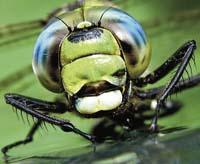
You can think that seeing more colors, having night vision, having more visual field or more rigor are advantages. But with what? According to Urrutia, "every animal lives in conditions. The right thing to these conditions is that. Some have special adaptations, but they are not comparable to others." In short, what is an advantage for one species can be a disadvantage for another.

Gai honi buruzko eduki gehiago
Elhuyarrek garatutako teknologia





